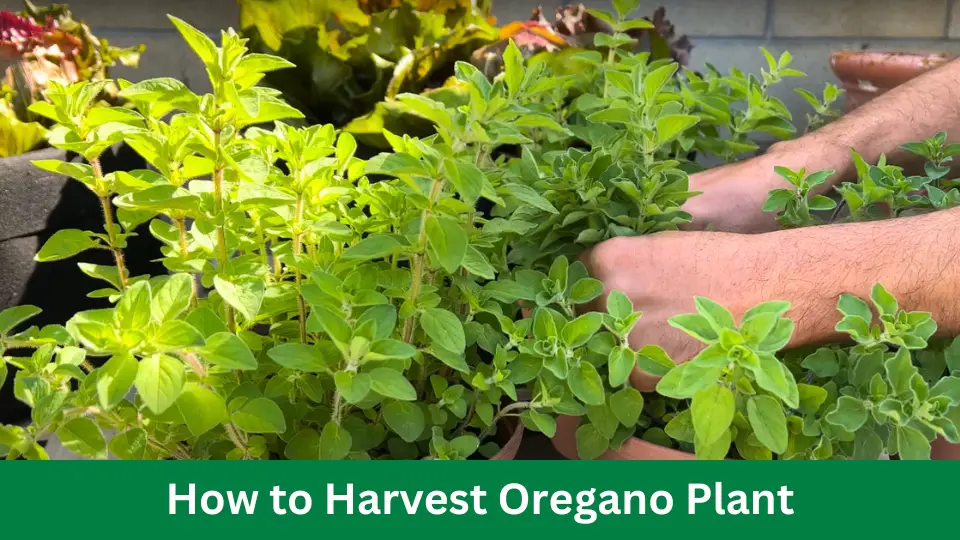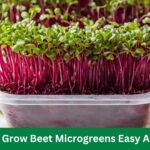To harvest oregano Plants, cut stems just above a leaf node before the plant flowers. Select healthy, young shoots for the best flavor.
Oregano is a popular herb prized for its aromatic and flavorful leaves, a staple in Mediterranean cuisine. Harvesting oregano at the right time ensures maximum flavor and potency, typically just before the plant blooms. This hardy perennial herb is easy to grow and can be harvested multiple times during the growing season.
A well-timed cut encourages the plant to produce new, lush growth, leading to repeated harvests. By following a few simple steps, gardeners can enjoy a bountiful supply of fresh oregano for their culinary needs. Proper harvesting techniques contribute to the plant’s health and longevity, making it a rewarding addition to any herb garden.
Intro To Oregano Harvesting
Harvesting oregano is simple and rewarding. This aromatic herb can elevate countless dishes, offering any recipe a touch of the Mediterranean. As delightful as it is to use in the kitchen, knowing when and how to harvest oregano properly is crucial for the best flavor and longevity of the plant.
The optimal time to collect oregano leaves is just before the plant blooms. This is when the leaves contain the highest concentration of essential oils, ensuring a robust flavor. Aim to harvest in the morning after the dew has dried but before the heat of the day, as this helps to maintain the oils’ potency.
Oregano plants are lush and full, usually about 4 to 5 inches tall. It’s ready to harvest when you see flower buds forming, but they haven’t opened yet. Look for deep green leaves packed with flavor and ready for your kitchen.
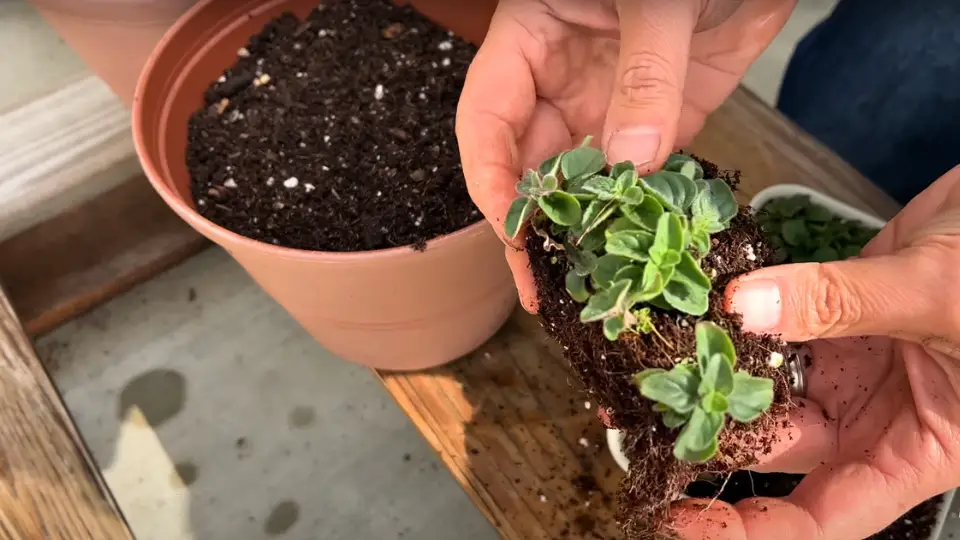
| Oregano Harvesting Quick Guide | |
|---|---|
| Best Time of Day | Morning |
| Plant Height | 4-5 inches |
| Visual Cue | Flower buds present |
| Leaf Color | Deep green |
A Quick Step for Harvest
- Identify flower buds for peak flavor.
- Cut oregano stems with sharp scissors or gardening shears.
- Leave about two-thirds of the plant intact for regrowth.
- Harvest no more than one-third of the plant at one time.
- Clip stems just above leaf nodes to encourage new growth.
- Wash leaves, pat dry, and use fresh leaves or store them for later.
Equipment For Oregano Harvesting
Gathering your oregano crop requires suitable tools for efficiency and care. Knowing which equipment to use is the first step to a successful harvest. The right tools ensure your oregano plants remain healthy and productive for the next season. Let’s explore the essential tools you’ll need.
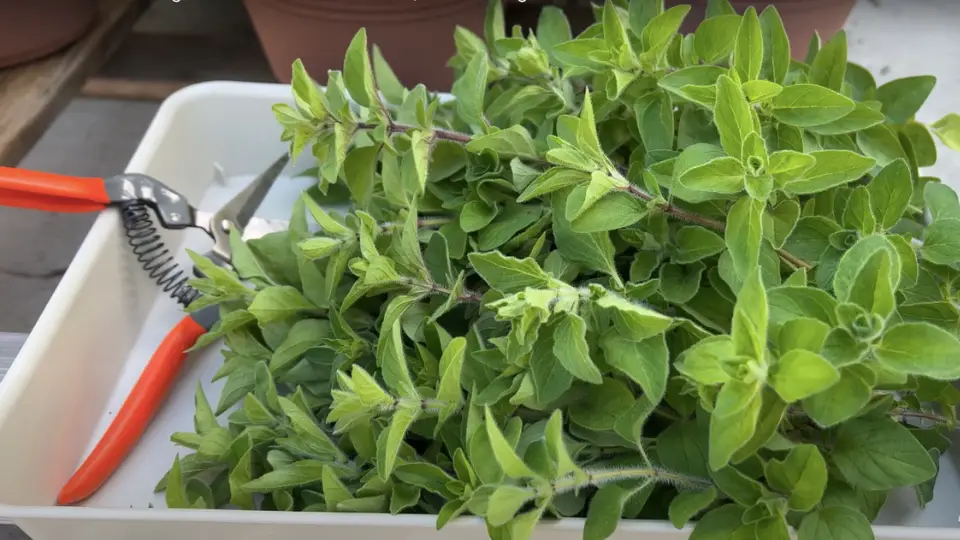
Selecting The Right Gardening Tools
Choosing proper gardening tools is vital. Here’s what you need:
- Garden Shears: Sharp blades make clean cuts.
- Pruning Scissors: For smaller stems, precision matters.
- Gloves: Protect hands from rough stems.
- Garden Tote: Keeps tools organized.
- Harvest Basket: To hold your fresh oregano.
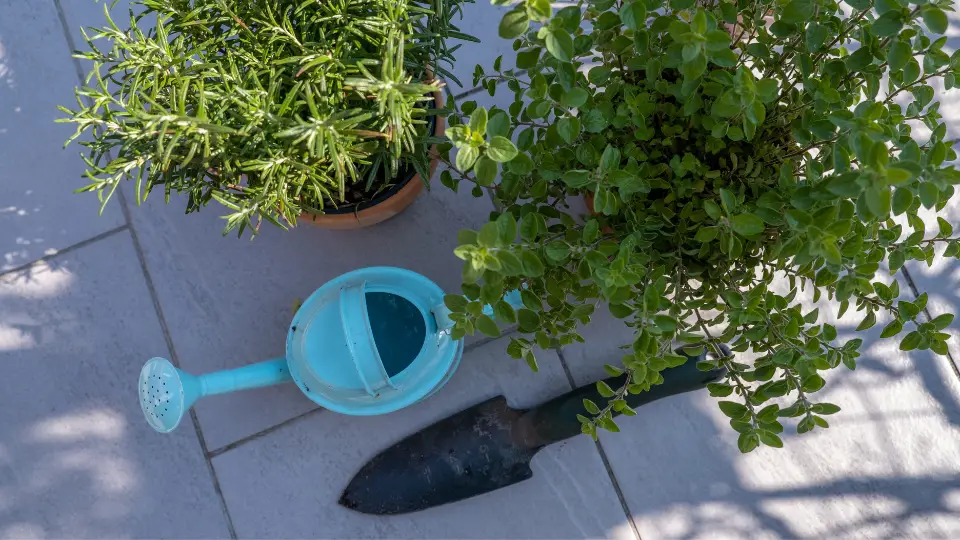
Cleaning And Maintaining Your Equipment
Clean and maintain your tools post-harvest. This prolongs their lifespan:
- Wash tools to remove soil and sap.
- Dry tools thoroughly to prevent rust.
- Sharpen the blades for a precise cut next time.
- Oil moving parts to maintain function.
- Store equipment in a dry place.
Pre-harvest Oregano Care
Ensuring your oregano plants are properly cared for before harvest can significantly affect flavor and yield. Proper watering and plant health inspection are critical steps in the pre-harvest routine.
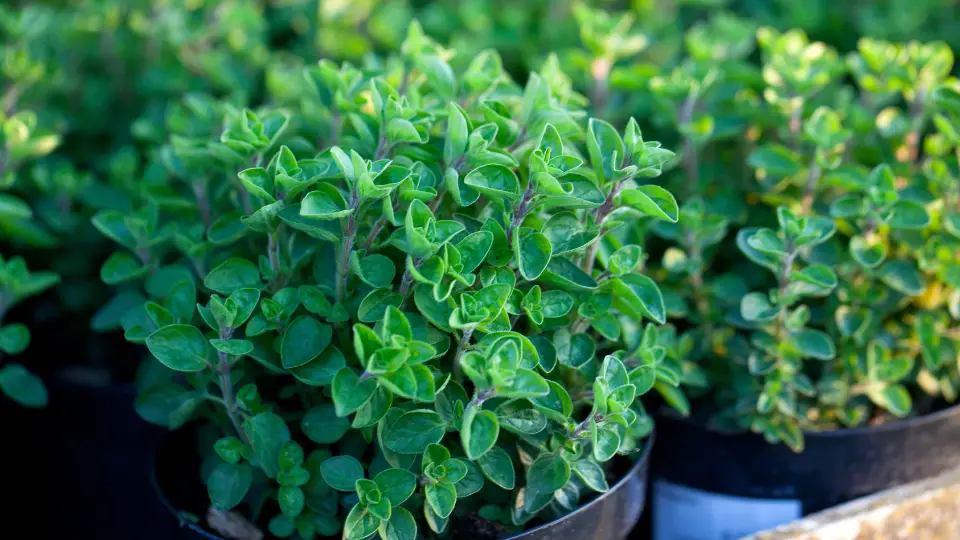
Watering Before The Harvest
Oregano plants need consistent moisture to thrive. Check the soil moisture regularly, ensuring it remains slightly damp to the touch. Here’s a simple watering guide:
- Water in the morning to allow any excess to evaporate throughout the day.
- Avoid overwatering to prevent root rot.
- Reduce water slightly a week before harvesting to intensify flavor.
Inspecting For Plant Health
Healthy oregano plants yield the best flavor. Focus on these areas:
| Aspect | Checklist |
|---|---|
| Leaves |
|
| Stems |
|
| Pests |
|
| Disease |
|
With these pre-harvest care tips, your oregano is set to provide a bountiful and tasty harvest.
Harvesting Techniques
Want your oregano to flourish? Use the right harvesting techniques! With careful cutting, your plant stays healthy and keeps producing those fragrant leaves all season. Discover the best ways to harvest oregano without harming your beloved herb.
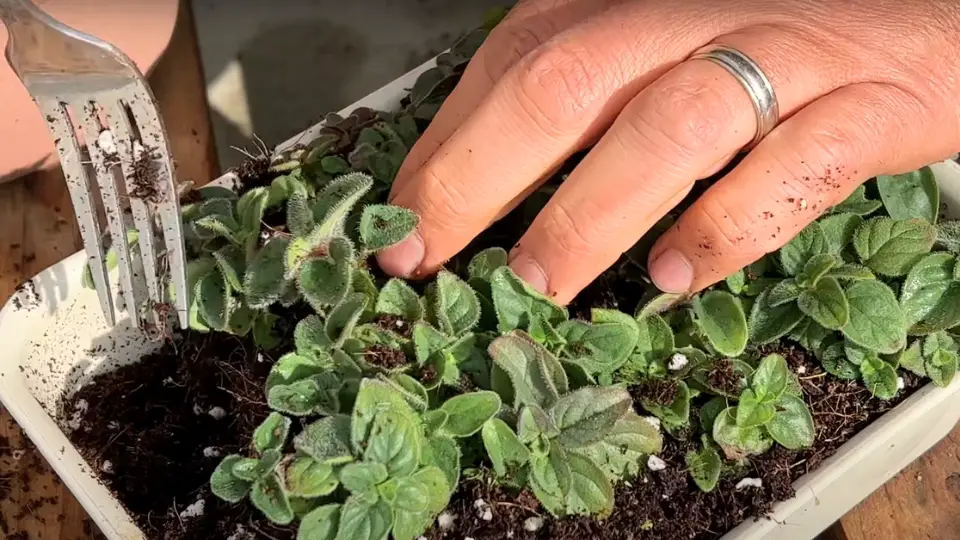
Cutting Oregano Properly
Pick the perfect time to harvest, just before the plant flowers, for the most intense flavor. Grab your scissors and get ready:
- Choose stems with young leaves. They are the most flavorful.
- Make your cut above the leaf nodes, four inches from the base.
- Snip carefully. Aim for a clean cut to promote rapid regrowth.
Avoiding Damage To The Plant
Protect your oregano with gentle harvesting. Use these tips to keep it thriving:
- Never cut more than one-third of the plant. This keeps it strong and healthy.
- Use sharp scissors to avoid crushing the stems.
- Leave several leaves on each stem to promote new growth.
Regularly trim your oregano. This encourages more leaves to grow. Your kitchen will thank you!
Post-harvest Handling
Post-harvest handling of your oregano plants is crucial to maintaining their flavor and longevity. Once you’ve harvested your oregano, proper care can make all the difference. Whether you use the fresh herbs, store them for future culinary adventures, or dry them for an extended shelf-life, follow these steps to ensure your oregano retains its aromatic punch.
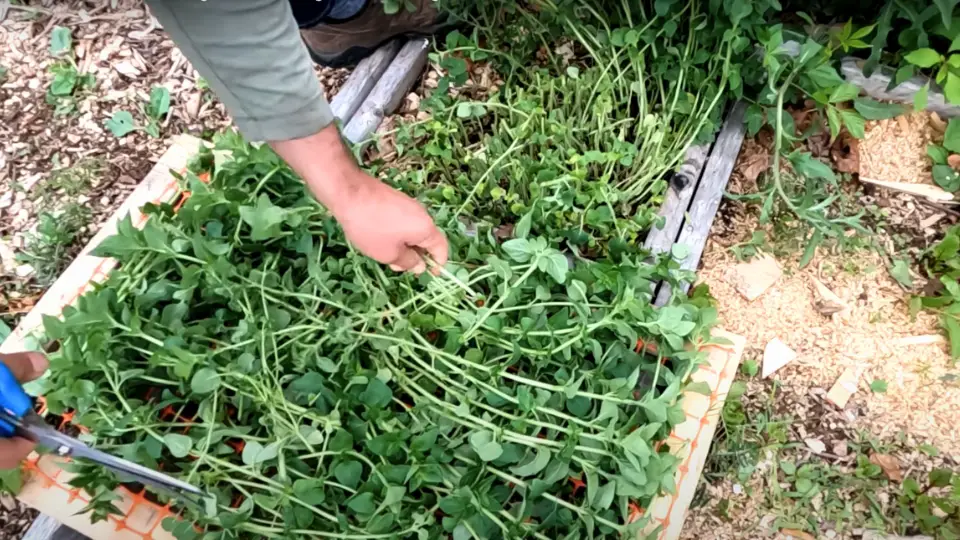
Storing Fresh Oregano
Keep your oregano vibrant and green with these simple storage solutions:
- Refrigeration: Wrap oregano sprigs in a damp paper towel and seal them inside a plastic bag. Store in the refrigerator.
- Counter-top bouquet: Place stems in a jar with water, like a bouquet, and cover with a plastic bag. Keep at room temperature.
Preparing Oregano For Drying
Drying oregano is a breeze with these prep tips:
- Clean: Gently rinse and pat dry sprigs to remove dirt.
- Arrange: Remove lower leaves, bundle stems, and tie with string.
- Hang: Suspend upside down in a warm, airy, and shady spot for one to two weeks.
- Check dryness: Ensure leaves crumble to the touch before storing.
Drying Oregano Effectively
Harvesting oregano and ensuring it retains its robust flavor involves effective drying techniques. Drying oregano properly results in a potent herb perfect for your culinary needs. Understanding the right environment and method is crucial for preserving its aroma and taste.
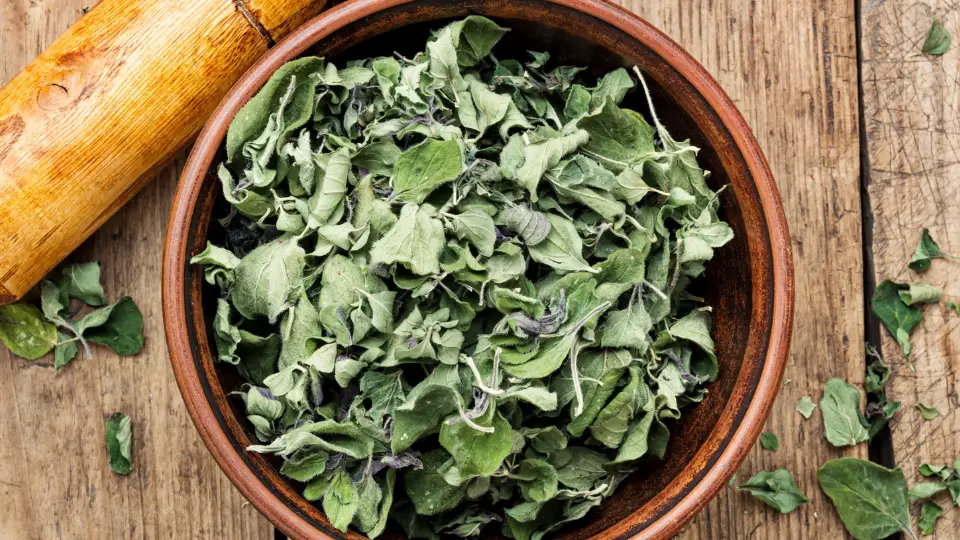
Choosing The Right Environment For Drying
To achieve optimal drying, selecting an environment that promotes moisture removal without degrading essential oils is key. The right space has good airflow, low humidity and is away from direct sunlight. This ensures your oregano dries slowly and evenly, preserving its quality.
- A well-ventilated area speeds up drying and prevents mold.
- Avoid exposure to sunlight as it can fade color and reduce flavor.
- Consistent temperatures between 60-80°F (15-27°C) are ideal.
- Low-humidity environments prevent prolonged drying times.
Different Drying Methods Compared
There are various ways to dry oregano, each with pros and cons.
Find the method that fits your resources and time.
| Method | Duration | Suitable Environment | Quality of Herb |
|---|---|---|---|
| Air Drying | 1-2 Weeks | Dry, Warm, Airy | High |
| Dehydrator | 1-4 Hours | Controlled | Consistent |
| Oven Drying | 1-2 Hours | Varies (Low Heat) | Moderate |
| Microwave Drying | 2-3 Minutes | NA | Varies |
Air drying is traditional and cost-effective but takes the longest. Dehydrators provide consistent results but require investment. Oven and microwave drying are faster, yet may lead to uneven drying and reduced flavor quality.
Preservation And Storing Tips
Successfully harvesting your oregano is only half the battle—proper preservation and storage are crucial. Packed with robust flavors, oregano can uplift your winter dishes if saved correctly. These savvy tips keep it fresh and potent from one season to the next.
Maximizing Shelf Life
Before you store, ensure your oregano is thoroughly dried. Any moisture can lead to mold. Dry by hanging bunches upside-down in a warm, well-ventilated area. Once dry, strip leaves from the stems. Use air-tight containers to keep the leaves whole and protect their essential oils.
- Avoid sunlight, which can degrade flavors.
- Keep cool. Store in a cabinet away from heat equipment.
- Label containers with harvest dates to track freshness.
Storing in small batches ensures you only open what you need, keeping the rest sealed and fresh.
Best Practices For Freezing Oregano
- Blanch leaves briefly in boiling water, then plunge into ice water. This preserves the vibrant green color.
- Pat dry thoroughly. Use a salad spinner or paper towels to remove excess water.
- Chop oregano if preferred, or leave the leaves whole.
- Flash freeze on a baking sheet to prevent clumping. Once frozen, transfer to freezer bags.
- Remove air from bags to prevent freezer burn—label bags with the date.
Frozen oregano can last up to a year. Use directly from the freezer to maintain its flavor.
Using Fresh Vs. Dried Oregano
Oregano is a versatile herb that brings flavor to your kitchen. Choosing between fresh or dried can make a difference in your cooking. This aromatic herb can be harvested and used straight from the garden or dried for longer storage, bringing unique properties to dishes.
Flavor Differences And Culinary Uses
Fresh oregano is subtle yet complex, perfect for dressings, marinades, and garnishes. On the other hand, dried oregano provides a more concentrated and robust flavor, making it ideal for heartier recipes that require cooking over long periods.
| Fresh Oregano | Dried Oregano |
|---|---|
| Delicate aroma | The bolder, earthy tone |
| Added towards the end of cooking | Added at the start of cooking |
| Great for salads and toppings | Ideal for stews and sauces |
Incorporating Oregano Into Recipes
Oregano spices up any meal with its vibrant flavors. To use fresh oregano, chop the leaves and sprinkle over your dish. With dried oregano, crush the leaves between your fingers to release the aroma before adding them to your recipe.
- Pizzas and Pasta: Dried oregano stands up to the heat and melds into the sauces beautifully.
- Grilled Vegetables: When sprinkled on top, fresh oregano adds a light, herby touch.
- Meat Marinades: Both forms infuse meats with a Mediterranean twist.
Remember that oregano brings its character to each fresh or dried dish. Experiment with both to discover the flavors and uses that best suit your culinary style.
Frequently Asked Questions For How To Harvest Oregano Plant
How Do You Pick Oregano Leaves So It Keeps Growing?
To pick oregano and encourage growth, snip off the stems just above a leaf node or set of leaves. Harvest regularly but never take over one-third of the plant to allow for recovery and continued growth.
What Part Of The Oregano Plant Do You Use?
The leaves of the oregano plant are used for culinary and medicinal purposes. They can be fresh or dried.
How Do You Know When To Cut Oregano?
Cut oregano when the plant reaches 4 to 6 inches tall, trimming stems just above a leaf node to promote bushier growth. Harvest in the morning for the best flavor before the plant flowers for optimal oil content.
Finally
Harvesting oregano is a simple yet satisfying process. You’ll ensure a bountiful, aromatic yield with the right timing and technique. Remember, gentle snips encourage growth. Embrace these tips, and your dishes will sing with the fresh zest of homegrown oregano.
Happy gardening and flavorful cooking!
Video Source: https://www.youtube.com/watch?v=bBx6gFUEEqc

